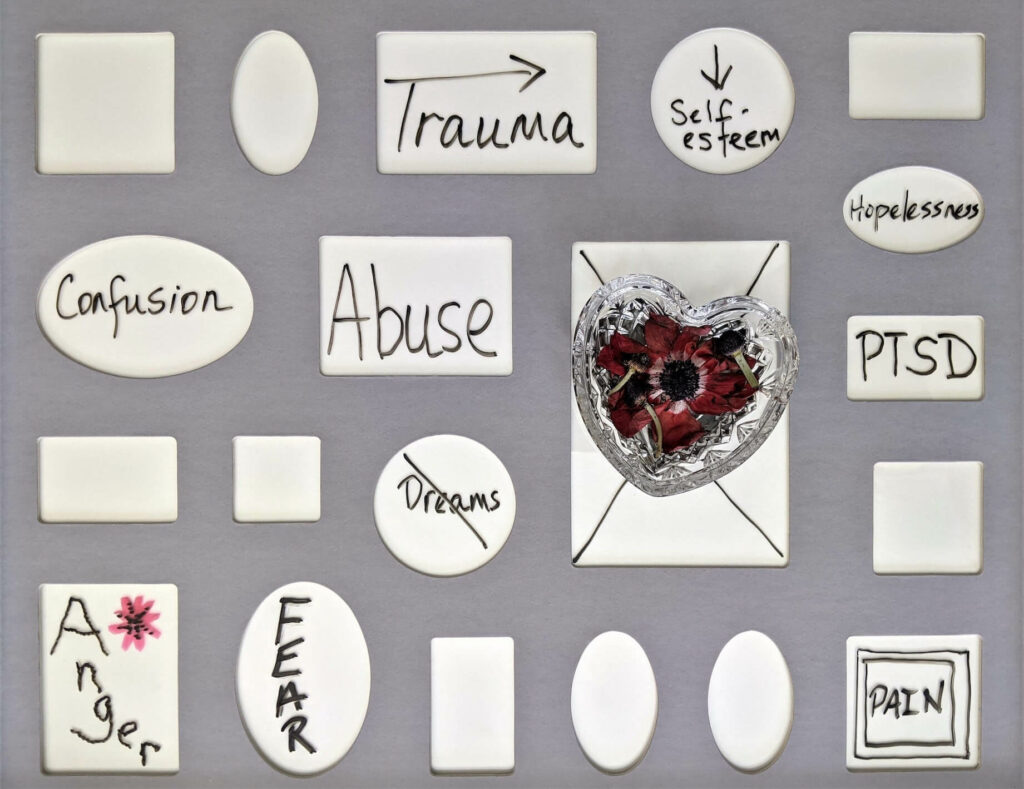
What’s the difference between Accelerated Resolution Therapy and EMDR Therapy?
One thing the mental health industry is not short on is acronyms and plenty of modality names. If you’re new to the world of therapy, or even if you’re not, all of these different terms may be gibberish to you. So, we wanted to break down two common therapy modalities that are most often confused – Accelerated Resolution Therapy (ART) and Eye Movement Desensitization and Reprocessing (EMDR). Let’s dive in.
What is Accelerated Resolution Therapy (ART)?
Let’s get the one tiny confusion out of the way first. ART is not the same as art therapy. Clear as mud, right? I know when you hear someone say they’re in ART therapy, the first thing you might think is that they’re painting pictures or molding clay as a form of catharsis. While that is absolutely an effective form of self-expression and is even used in some therapy practices, that’s not what we’re talking about here. We’re talking about Accelerated Resolution Therapy, generally just referred to as ART when spoken verbally and if you see it written, it’ll be in all caps.
Now that we have that clarification out of the way, let’s talk about what exactly ART is. Accelerated Resolution Therapy is a form of therapy that was developed using several different evidence-based therapies including Gestalt, Cognitive Behavioral Therapy, Guided Imagery, EMDR, brief psycho-dynamic, and exposure therapies. ART uses therapist-guided eye movements to facilitate the positive visualization of memories or experiences. These eye movements help to reduce distress from traumatic memories. It focuses on replacing negative images and their connection with emotional and physical reactions.
Accelerated Resolution Therapy is kind of like if you leave for work and your house was super messy and cluttered, but while you were out someone came in, cleaned everything up, and put everything in its proper place. Everything is still there, but it’s just not in the way any longer. You’re able to go about your day more easily now. You don’t have to worry about the messy stuff stopping you from having a good experience. Think of that messy stuff as a traumatic memory. ART takes the messy stuff, and the trauma, and helps your brain process it through a healthy lens. Then, puts it away in its proper place so you don’t have to worry about it any longer.
What is EMDR (Eye Movement Desensitization Therapy)?
EMDR is a form of therapy that uses alternating eye movements, sounds, or taps to activate your brain’s self-healing process. The idea of Eye Movement Desensitization Therapy is that the human brain is just like any other part of the body. It can heal itself, like a cut or a bruise. During an EMDR session, the therapist will say the same version of the phrase, “go with that” or “what do you get now?” to simply bring the client through the process. The therapist should not provide much more guidance than this.
EMDR is an eight-phase treatment during which the therapist will determine which memory to target and then ask the client to hold on to different pieces of that memory. This process could go on for one session or many sessions. The second to last phase results in the therapist asking the client to keep a log throughout the week of any thoughts, dreams, or memories that come up related to their trauma. Finally, the last phase consists of the therapist walking the client through how to use all they’ve learned to process future events. EMDR is used to treat long-term or deep-rooted traumas like PTSD or multiple trauma victims. In an HMO Kaiser Permanente study, 77% of multiple trauma victims and those diagnosed with PTSD were found to be free from their trauma after sessions with an EMDR therapist.
What’s the Difference Between EMDR and ART?
Although both therapy modalities use eye movements to guide you through trauma, the easiest way to remember the difference is in the name of ART – Accelerated Resolution Therapy. ART is a more direct, more rapid approach than EMDR. Where EMDR would take you through an entire traumatic event, usually in chronological order, with the therapist giving those short guiding statements like, “go with that.” or “what do you see now?” ART is more singular image-focused. It takes you directly to a traumatic image and actively engages your body regulation to support voluntary image replacement, toggling between your mind and body.
EMDR focuses more on the therapist guiding you from replacing a negative thought with a positive thought. Then, during the EMDR session, the therapist will take you through your trauma, asking those specific questions about what you believe about a trauma and helping you to reprocess those beliefs in a different light. When we experience trauma, our brains can shut off in a sense, and store memories differently. There’s a disconnect between what actually happened (what we felt, saw, heard, or even smelled or tasted) and what our brains stores. This is why EMDR is more cognitive-based.
ART, on the other hand, is visually-based. ART asks you to replace a negative image with a positive image or metaphor. During an Accelerated Resolution Therapy session, the therapist will ask you to check in with your body to see how you’re feeling – allowing you to describe the sensation in your body. The key differences here are 1) EMDR is cognitive, dealing with experiences where ART is visual, dealing only with images, and 2) EMDR does not focus as heavily on how your body is feeling throughout the session, but rather what you are thinking. The body scans allow you to be in more full control throughout the session.
Lastly, to stay true to the Accelerated part of Accelerated Resolution Therapy, it’s more structured and relies more heavily on scripted steps within a single session. EMDR has set phases (the eight that we mentioned earlier) over a number of sessions. These multiple sessions of EMDR can leave the client feeling stuck in the middle of a trauma between sessions, as opposed to the rapid resolution of ART.
What’s the Bottom Line? Which One Is Best for Me?
Both modalities are great for treating and healing trauma. Both are great alternatives to talk therapies if you’re feeling stuck and need a breakthrough. Both can be used to treat PTSD, phobias, anxiety, depression, and addictions.
The difference lies in how quickly the process takes and in whether or not the memory or experience you’re trying to replace is primarily cognitive or visual.
In either case, MUV Counseling is here for your counseling needs. Our founder and supervising therapist, Selena Soni is licensed in Accelerated Resolution Therapy and offers a free 15-minute consultation to answer any lingering questions you may have. If it turns out that one modality may be better for you than the other, your mental health needs, happiness, and healing are our priority. Please don’t hesitate to reach out today.





